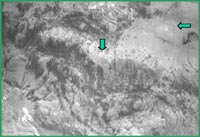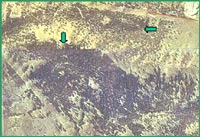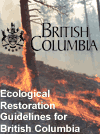 |
|

"Restore
to what?" is a crucial question that every individual interested
in restoration must ask. Ecosystems are dynamic, and continually
changing over time and space. A common long-term goal (or
desired future condition)
for restoration is that the ecosystem looks and
functions as it did before it was damaged or degraded, although
exact replication of past conditions is rarely possible. Additionally,
a similar ecosystem in good or excellent condition
(a reference ecosystem)
can be used in defining a goal (Gayton 2001). If you
are planning a restoration project you no doubt have a goal in mind;
this section should help you define your goals based on concepts
common to all restoration projects.
What
Are Restoration Goals & Objectives?
Restoration
goals describe the desired future condition
of a site, often decades
into the future. These long-term goals are supported with more short-term
objectives, or targets. When establishing these goals and objectives,
it is important to have an understanding of the
scale of restoration
(ecosystem processes, habitat, and/or individual species), processes
of ecological succession, and the concepts of
natural disturbance regimes
and the natural range of variability. Taking into account
natural healing processes, natural disturbance, and expected variability
over time and space will help ensure your restoration prescriptions
are appropriate for your site and the landscape you are working
in.
Restoration objectives will be as explicit as possible about the
scale and time-frame for restoration,
and will be measurable so
that progress towards the goals can be assessed. Given the dynamic
nature of ecosystems, it is acceptable to state goals and objectives
in terms of thresholds and ranges of values, as well as in definite
number values.


BC Conservation Federation
The same area in 1948 (left) and 1995 (right)
- note changes in the amount of forest cover, partly as a result
of fire suppression. A goal for this park near Kamloops might be
to restore the amount of grasslands and open forests to within the
natural range of variability, as described by old photographs and
surveys.
|
Example Goals and Objectives
|
GOAL
Restore valley bottom riparian vegetation
composition and structure to former
conditions (i.e. restore to a
desired future condition,
based on old surveys and
photographs, stump counts, scientific
literature describing typical ecosystem
conditions, and the former disturbance
regime).
|
OBJECTIVES
-
Remove dykes and deactivate roads to
allow flooding and channel movement
to occur.
-
Thin deciduous trees and plant
coniferous trees native to the site to
help attain target densities within a
specified time frame.
-
Create habitat features (e.g., snags,
coarse woody debris, tree cavities, and
shrubby gaps) by specified type and
number/density.
|
GOAL
Restore a Garry oak ecosystem to a
condition of ecological integrity (as
described by historic accounts, existing
reference ecosystems,
and professional opinion).
|
OBJECTIVES
- Remove specified exotic species to
below a certain percentage of ground
cover (specify time-frame)
- Plant native plants (specify type and
number, time-frame)
- Re-introduce native butterflies (specify
type and number)
- Introduce periodic fire to control
Douglas-fir ingrowth (specify average
fire return intervals)
|
|








